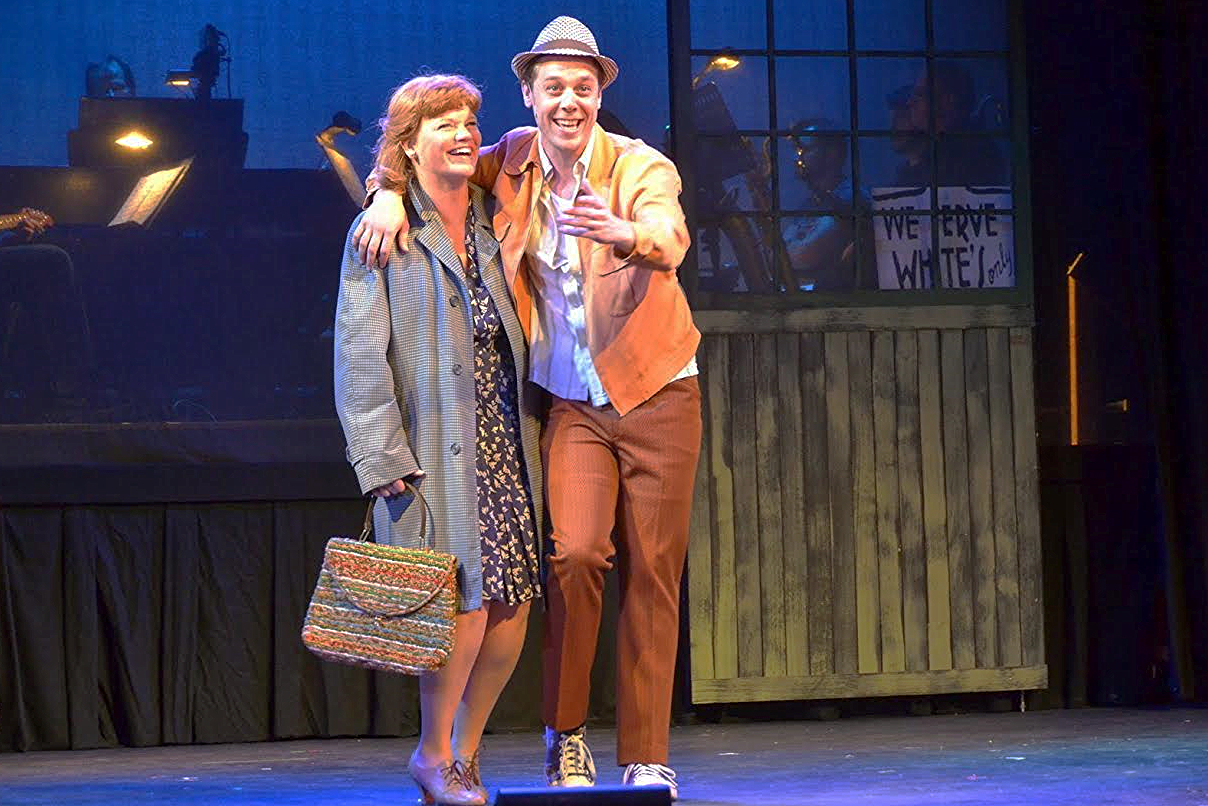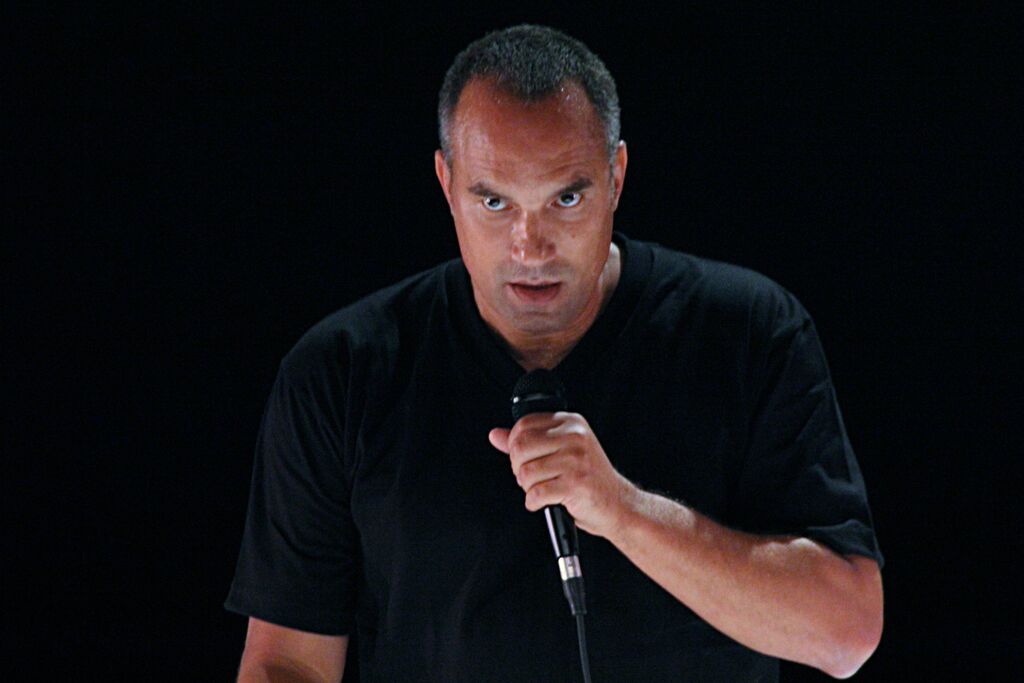Review of Knives in Hens at Yale Cabaret
The second show of the Yale Cabaret’s Season 48 is Scottish playwright David Harrower’s starkly beautiful Knives in Hens. Directed with a brilliant grasp of how to translate the play into the Cab’s space by 2nd-year director Jesse Rasmussen, Knives features a cast of three and a drama that is both an erotic triangle and a meditation on traditional roles and the path to self-determination.
The play is set in an unnamed village at an unspecified time (Harrower intends rural Scotland; Rasmussen and company transport the action, quite effectively, to what seems like the Appalachians). A couple, identified by their roles—he, William (Niall Powderly), a ploughman; she (Elizabeth Stahlmann), his faithful wife and helpmate—live a life close to nature and their erotic relationship. Powderly is amazingly effective at inhabiting the subtleties of the ploughman’s patriarchal authority and its hold over his wife; a scene where he upbraids her for just standing and looking in public—as unseemly behavior—plays out both as deliberate control of a possession and as fear of others’ perceptions of him via his wife. That point comes to its inevitable dramatic realization when he sends her to carry their grain to the miller to be converted to flour.
The miller, Gilbert Horn (Paul Cooper), is a figure of almost legendary malevolence. Did he kill his wife and child? Is he mad? Rumors circulate about him, and Harrower predicates the context of the play on the strict division of labor in pre-industrial farming communities: the ploughman digs the earth and plants and reaps, consequently his horses, as his essential laborers, are dearer to him than anything; his livelihood depends on them. But that also makes him a figure for jibes; as the miller tells the young wife, the village calls her husband Pony William. Already she’s seen how his care for a mare at foaling can take precedence over his need for her (he’ll spend a night in the barn and forsake her bed). While to the couple, the miller, though he performs a necessary task, seems something of a parasite, even a pariah, because his toil is mechanical—via his great grinding stones—rather than physical. Harrower’s play effectively lets its context work on us imaginatively as we try to get into the heads of these figures to understand their very basic lives.
Elizabeth Stahlmann (Young Woman); Niall Powderly (Pony William); Paul Cooper (Gilbert Horn)
Key to our understanding is Harrower’s stripped-down but very poetic language, its effects mainly gained by short, emphatic phrases and—as was common to many Christianized barely literate societies—a Biblical intonation that gives unusual power to individual words. So that when the wife accuses the miller of “envy,” the word bears the weight of a mortal sin. The wife is referred to only as “woman”—at one point she writes her name down for the miller but we never learn it. Indeed that act of writing is the first infraction against her fidelity to William, and the sight of black powder on the long white surface that forms the main playing space creates a sense of stain—both the ink upon her fingers and the stain upon her soul. In a recurring set-piece, the woman speaks poetic phrases about nature into a hanging microphone—finding herself challenged to describe the sky. These instances of stream-of-consciousness show us a woman struggling to articulate her own sense of nature and her place in it, under the challenge of her husband likening her to “a field,” or a thing of nature herself.
As the drama plays out, the relation between the woman and the miller becomes paramount as he seems to signal possibilities beyond the earthiness of her former existence. As Gilbert, Cooper is a darkly good-looking figure for the woman’s infatuation, having a way of speaking to her that seems more concerned for who she might be than, as her husband does, who she should be, for him. As the woman, Elizabeth Stahlmann is uncannily perfect for the role. In her simple dress, looking like she stepped out of one of Walker Evans’ photos for Let Us Now Praise Famous Men, she lets us see how her own mind becomes a wonder for this uneducated but not illiterate woman. She is on her way by play’s end but not before a necessary death, a form of sacrifice informed by the themes of planting and grinding that is cruelly fitting but nonetheless unsettling.
Knives in Hens slackens a bit as we relax into its world, though managing to keep us on edge even when no direct threat is present. The production benefits from Elizabeth Dinkova’s stark set: two white cots on either side of a long stretch of white flooring represent the beds of the couple and of the miller respectively. A simple but significant dramatic shift occurs as the woman begins in one bed and ends up in the other; stretched out on the miller’s cot after fainting, she becomes an object the two men regard with both awe and suspicion. Feeling vulnerable, the ploughman invokes God; the miller, coming to terms with volition and knowledge—in a register moving from Adam and Eve to Cain and Abel—realizes that the voice in his head is not God but “just me.”
Harrower’s styling of the stakes here is as deliberate as a Morality Play, and Rasmussen’s production capitalizes on the play’s grim rhythms, letting judicious use of sound—for the grinding mill and for very specific voices offstage—add dimension, and the striking visual effect of black smeared on white create the drama’s hieratic aura. A fascinating night at the Cab.
Knives in Hens
By David Harrower
Directed by Jesse Rasmussen
Dramaturg: Davina Moss; Producer: Adam J. Frank; Set Designer: Elizabeth Dinkova; Costume Designer: Fabian F. Aguilar; Lighting Designer: Andrew F. Griffin; Sound Designer: Tom Larkey; Stage Manager: Rebekah Heusel; Technical Director: Alexandra Reynolds; Assistant Director: Shadi Ghaheri
Cast: Paul Cooper; Niall Powderly; Elizabeth Stahlmann
Yale Cabaret
September 24-26, 2015














































